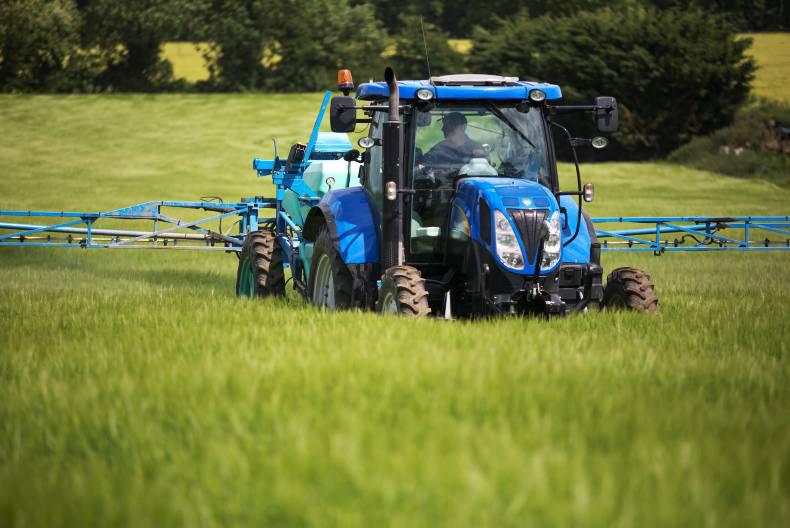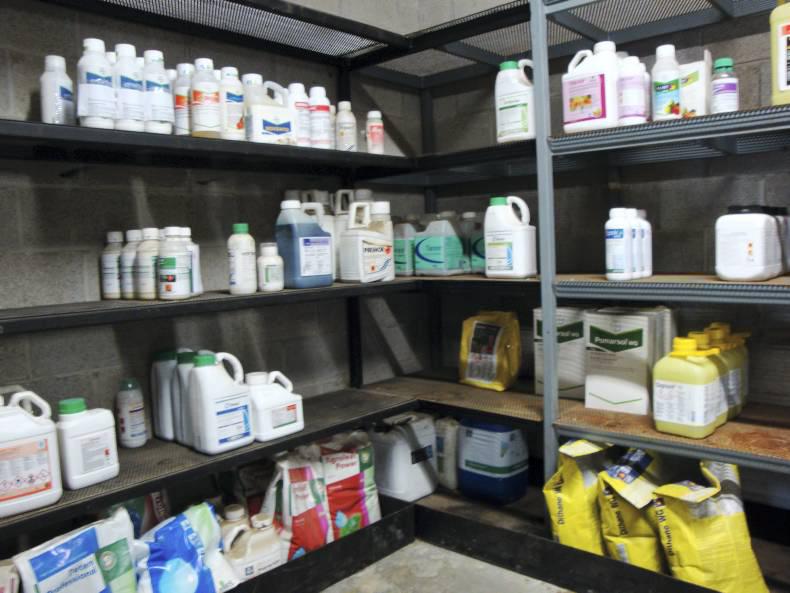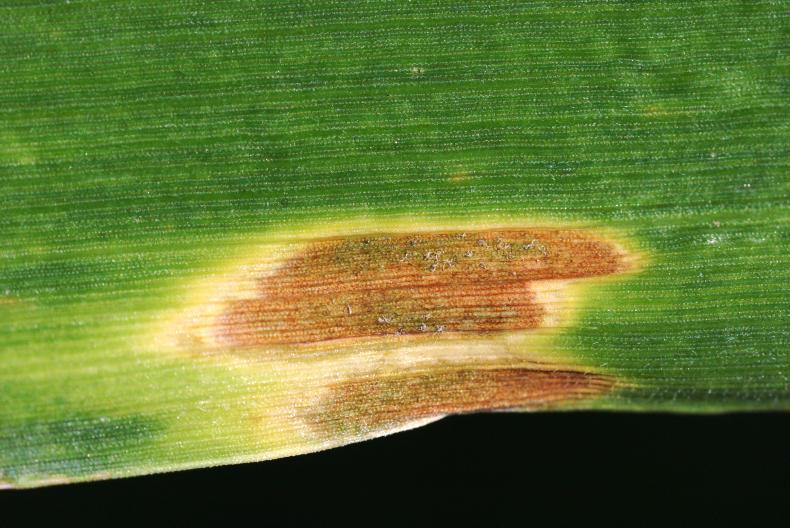Although grain prices are low, not having a completed disease control programme would be false economy given the time and money already invested. That said, we must ensure that we get the maximum return on money invested in all our crop inputs.
A critical component to maximising the yield response is to understand what we are trying to achieve with the disease control programme and to get the timings right to help achieve it. With a wide choice of good active ingredients and products available that give good disease control, the choice of product and rate is very much secondary to getting the application timing right.
The importance of fungicide timing
There is generally widespread acceptance now that we need to start disease control in spring barley early – pre-stem extension – to stop disease getting a hold in the crop and reducing tiller numbers. This finding was based on a series of nine fungicide timing experiments carried out over four years during 2012-2015.
These experiments were conducted in Carlow, Wicklow, Wexford and Kilkenny and they gave an average yield response of 0.77 t/ha to the late tillering spray. Delaying the first application to a more traditional first to second node timing (GS31-32) reduced the yield response by about 0.2 t/ha for exactly the same expenditure on fungicide.
Starting the disease control programme early is important in spring barley because it is grain number per unit area that determines the yield potential. Grain number per unit area is primarily determined by the number of heads, with a smaller contribution from grain number per head. Once the crop is into stem extension, peak tiller number has already passed and tiller death has begun. So by delaying the start to this traditional stem extension timing we might already have lost tillers that are critical to maximise yield.
In the same series of experiments, a yield response of 0.82 t/ha (almost identical to that from the tillering spray) was achieved from a fungicide application at GS39/49 (flag leaf fully emerged to first awns visible). Delaying this late spray until the ear was fully emerged halved the yield response (see graph).
Final grain number per ear and potential grain size is set in spring barley as the ear is emerging and over the following two weeks. Applying a fungicide just before ear emergence therefore protects grain number and potential size as well as prolonging canopy survival to ensure good grain fill.
These experiments included all possible combinations of the four individual timings; 1.0 l/ha of Siltra was applied at each timing to allow a fair comparison of the timing effect without complications from different products.
On average, the untreated crops yielded 6.7t/ha. This increased to 7.5t/ha with two sprays applied at the traditional timings of GS31/32 followed by GS59. However, applying two sprays at mid- to late-tillering and flag leaf fully emerged to first awns visible, increased the yield to 7.9t/ha for no additional fungicide spend.
Appling additional sprays, either between those two timings or adding a later spray after the ear was fully emerged, had no effect on yield. When sprays were applied at all four timings, the yield was identical to where two correctly timed sprays were applied (see graph).
Product choice
We are fortunate in barley that there are a wide range of active ingredients available, from a number of fungicide classes, which are active against most of the barley diseases. The fungicide classes include: Stobilurins (eg, Acanto, Amistar, Comet); Triazoles (eg, Proline, Folicur, Caramba); SDHIs (eg, Imtrex, Vertisan, Zulu); Morpholines and other mildewicides (eg, Corbel, Flexity, Talius); and multi-site fungicides (eg, Bravo and Phoenix).
All of the above are available in a wide number of products and mixtures, as well as other actives from different groups, such as Cyprodinil, which is only available in mixtures (eg, Bontima).
This gives us a wide range of options to choose from. It also gives us the option to not apply the same active ingredient more than once in a season which enables effective disease control with good resistance management. However, it also makes the choice of what to use somewhat mind-boggling.
Proline, as co-formulated products or mixtures, was the active ingredient of choice for many years on barley, particularly where Rhynchosporium was established in the crop. However, the arrival of new SDHI products and mixtures in recent years has provided a much wider choice of very effective options.
To compare the wide range of options, a series of experiments was set up in 2015. This involved three sites; two of these were on Propino, one in Wicklow and the other in Carlow, where the main disease was Rhynchosporium and the third was a crop of SY Taberna in Carlow, where the main disease was Ramularia.
These experiments compared two sprays of SDHI based products, a non-SDHI mixture followed by an SDHI based product, an SDHI-based product followed by a non-SDHI-based mixture and programmes with no SDHI included. All products were applied at 60% of the full label rate, with the exception of Bravo, which was applied at 1.0 l/ha.
The average yield response to the two spray programme was 0.9 t/ha at 85% DM, with the highest response of 1.4t/ha to a programme of Bontima followed by Proline + Bravo. However, all programmes gave good disease control and across the sites there were few consistent or significant differences between the programmes (see graph).
Given the good activity of a range of fungicide products available for use on barley and the relatively low yield response compared to that on wheat, two applications of reduced rate mixtures applied at the right time will provide the maximum output for the minimum spend. From the point of view of reducing the risk of resistance development, using mixtures of different active ingredients at different timings will provide for the long term viability of spring barley production.
In terms of the final spray on spring barley this year, aim to apply it as the awns are just peeping and use a product or products which contains different actives in that spray and also ones that are different to those that were used in that same field already this year.
Results from our trials in 2015 showed little in the way of consistent differences between products, combinations or sequences and there were no significant difference between treatments across all sites.
Timing of two sprays is very important in terms of maximising the benefit from any combination of products used on spring barley.Fungicides are best used at mid- to late-tillering and again between flag leaf emerged and just as the awns are appearing.There is little to choose between specific individual actives but they must be used in combinations with a second active to help protect them against resistance development.It is preferable that different actives be used in the two sprays. Read more
To read the full Sprays Focus Supplement, click here
Although grain prices are low, not having a completed disease control programme would be false economy given the time and money already invested. That said, we must ensure that we get the maximum return on money invested in all our crop inputs.
A critical component to maximising the yield response is to understand what we are trying to achieve with the disease control programme and to get the timings right to help achieve it. With a wide choice of good active ingredients and products available that give good disease control, the choice of product and rate is very much secondary to getting the application timing right.
The importance of fungicide timing
There is generally widespread acceptance now that we need to start disease control in spring barley early – pre-stem extension – to stop disease getting a hold in the crop and reducing tiller numbers. This finding was based on a series of nine fungicide timing experiments carried out over four years during 2012-2015.
These experiments were conducted in Carlow, Wicklow, Wexford and Kilkenny and they gave an average yield response of 0.77 t/ha to the late tillering spray. Delaying the first application to a more traditional first to second node timing (GS31-32) reduced the yield response by about 0.2 t/ha for exactly the same expenditure on fungicide.
Starting the disease control programme early is important in spring barley because it is grain number per unit area that determines the yield potential. Grain number per unit area is primarily determined by the number of heads, with a smaller contribution from grain number per head. Once the crop is into stem extension, peak tiller number has already passed and tiller death has begun. So by delaying the start to this traditional stem extension timing we might already have lost tillers that are critical to maximise yield.
In the same series of experiments, a yield response of 0.82 t/ha (almost identical to that from the tillering spray) was achieved from a fungicide application at GS39/49 (flag leaf fully emerged to first awns visible). Delaying this late spray until the ear was fully emerged halved the yield response (see graph).
Final grain number per ear and potential grain size is set in spring barley as the ear is emerging and over the following two weeks. Applying a fungicide just before ear emergence therefore protects grain number and potential size as well as prolonging canopy survival to ensure good grain fill.
These experiments included all possible combinations of the four individual timings; 1.0 l/ha of Siltra was applied at each timing to allow a fair comparison of the timing effect without complications from different products.
On average, the untreated crops yielded 6.7t/ha. This increased to 7.5t/ha with two sprays applied at the traditional timings of GS31/32 followed by GS59. However, applying two sprays at mid- to late-tillering and flag leaf fully emerged to first awns visible, increased the yield to 7.9t/ha for no additional fungicide spend.
Appling additional sprays, either between those two timings or adding a later spray after the ear was fully emerged, had no effect on yield. When sprays were applied at all four timings, the yield was identical to where two correctly timed sprays were applied (see graph).
Product choice
We are fortunate in barley that there are a wide range of active ingredients available, from a number of fungicide classes, which are active against most of the barley diseases. The fungicide classes include: Stobilurins (eg, Acanto, Amistar, Comet); Triazoles (eg, Proline, Folicur, Caramba); SDHIs (eg, Imtrex, Vertisan, Zulu); Morpholines and other mildewicides (eg, Corbel, Flexity, Talius); and multi-site fungicides (eg, Bravo and Phoenix).
All of the above are available in a wide number of products and mixtures, as well as other actives from different groups, such as Cyprodinil, which is only available in mixtures (eg, Bontima).
This gives us a wide range of options to choose from. It also gives us the option to not apply the same active ingredient more than once in a season which enables effective disease control with good resistance management. However, it also makes the choice of what to use somewhat mind-boggling.
Proline, as co-formulated products or mixtures, was the active ingredient of choice for many years on barley, particularly where Rhynchosporium was established in the crop. However, the arrival of new SDHI products and mixtures in recent years has provided a much wider choice of very effective options.
To compare the wide range of options, a series of experiments was set up in 2015. This involved three sites; two of these were on Propino, one in Wicklow and the other in Carlow, where the main disease was Rhynchosporium and the third was a crop of SY Taberna in Carlow, where the main disease was Ramularia.
These experiments compared two sprays of SDHI based products, a non-SDHI mixture followed by an SDHI based product, an SDHI-based product followed by a non-SDHI-based mixture and programmes with no SDHI included. All products were applied at 60% of the full label rate, with the exception of Bravo, which was applied at 1.0 l/ha.
The average yield response to the two spray programme was 0.9 t/ha at 85% DM, with the highest response of 1.4t/ha to a programme of Bontima followed by Proline + Bravo. However, all programmes gave good disease control and across the sites there were few consistent or significant differences between the programmes (see graph).
Given the good activity of a range of fungicide products available for use on barley and the relatively low yield response compared to that on wheat, two applications of reduced rate mixtures applied at the right time will provide the maximum output for the minimum spend. From the point of view of reducing the risk of resistance development, using mixtures of different active ingredients at different timings will provide for the long term viability of spring barley production.
In terms of the final spray on spring barley this year, aim to apply it as the awns are just peeping and use a product or products which contains different actives in that spray and also ones that are different to those that were used in that same field already this year.
Results from our trials in 2015 showed little in the way of consistent differences between products, combinations or sequences and there were no significant difference between treatments across all sites.
Timing of two sprays is very important in terms of maximising the benefit from any combination of products used on spring barley.Fungicides are best used at mid- to late-tillering and again between flag leaf emerged and just as the awns are appearing.There is little to choose between specific individual actives but they must be used in combinations with a second active to help protect them against resistance development.It is preferable that different actives be used in the two sprays. Read more
To read the full Sprays Focus Supplement, click here










SHARING OPTIONS